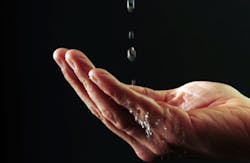BIRMINGHAM — In Water Technology’s October feature, “Waste less, pollute less: A guide to reduce urban water use,” Larry Levine, contributing author, writes about the current water challenges in the U.S. and how proper water management, especially in urban areas, can help to solve these concerns.
In the article Levine explains how the Natural Resources Defense Council recently released a publication to raise awareness of urban water use. “Waste Less, Pollute Less” highlights water conservation strategies for water pollution control.
“[The report] shows how cities and utilities can use urban water conservation to help meet Clean Water Act standards that protect public health and the environment,” says Levine in the feature, offering the following examples, highlighted in “Waste Less, Pollute Less,” of communities practicing urban water conservation:
- The San Antonio Water System has kept water demand steady for 25 years despite a 67 percent increase in the number or water customers through an aggressive conservation program. This has allowed the city to avoid up to $2.7 billion in additional water supply costs and over $1 billion in expanded wastewater treatment capacity costs.
- New York has used rebates and regulations to promote water–efficient toilets, both to reduce potable water demand and to avoid costly sewage treatment plant expansions. The state was able to defer billion–dollar expansions of four sewage treatment plants by reducing dry–weather sewage flows by 17 percent over five years. New York also anticipates further water conservation gains will reduce annual sewage overflows by 1.7 billion gallons, or eight percent, while saving millions of dollars in annual operational costs and far more in avoided capital costs.
- Los Angeles, motivated both by pressure on its wastewater treatment plants and by water shortages, relied on tools such as mandatory fixture retrofits in existing buildings and use of “ultra–low flush” toilets in all new buildings, to keep its water use level even as population surged by one million people. Additionally, the city’s strategy to reduce polluted runoff includes large–scale stormwater capture and infiltration projects, which also serve the purposes of landscape irrigation (substituting for potable water) and groundwater recharge (enhancing local supplies).
You can find the entire feature on urban water conservation strategies here.
